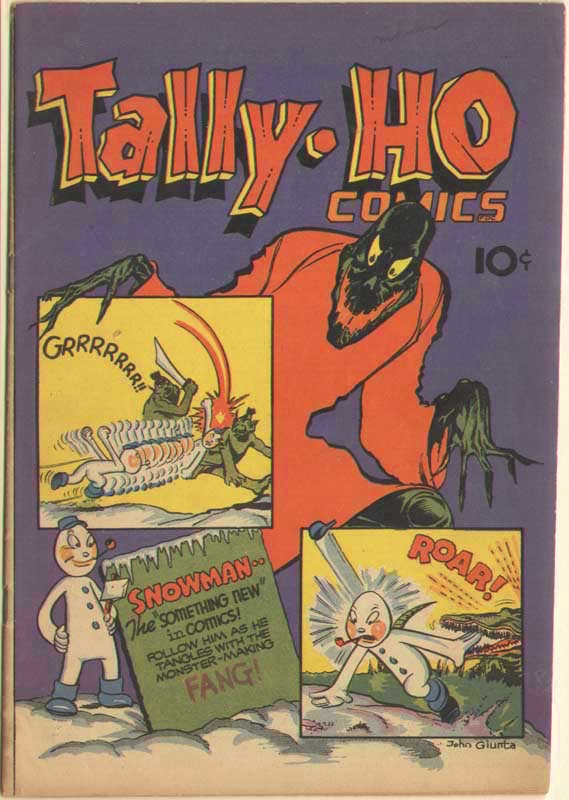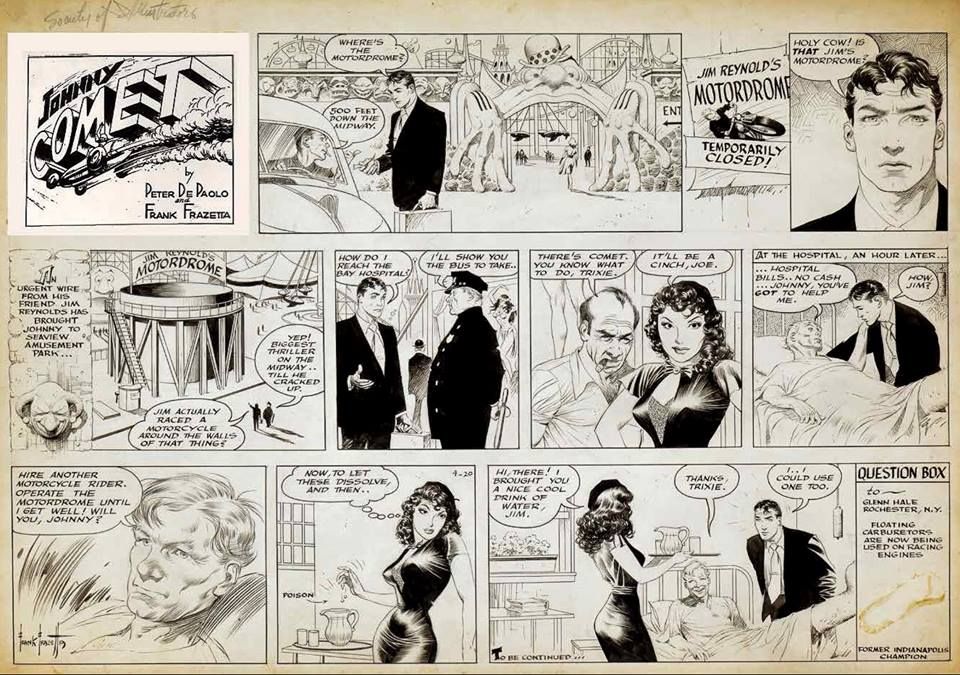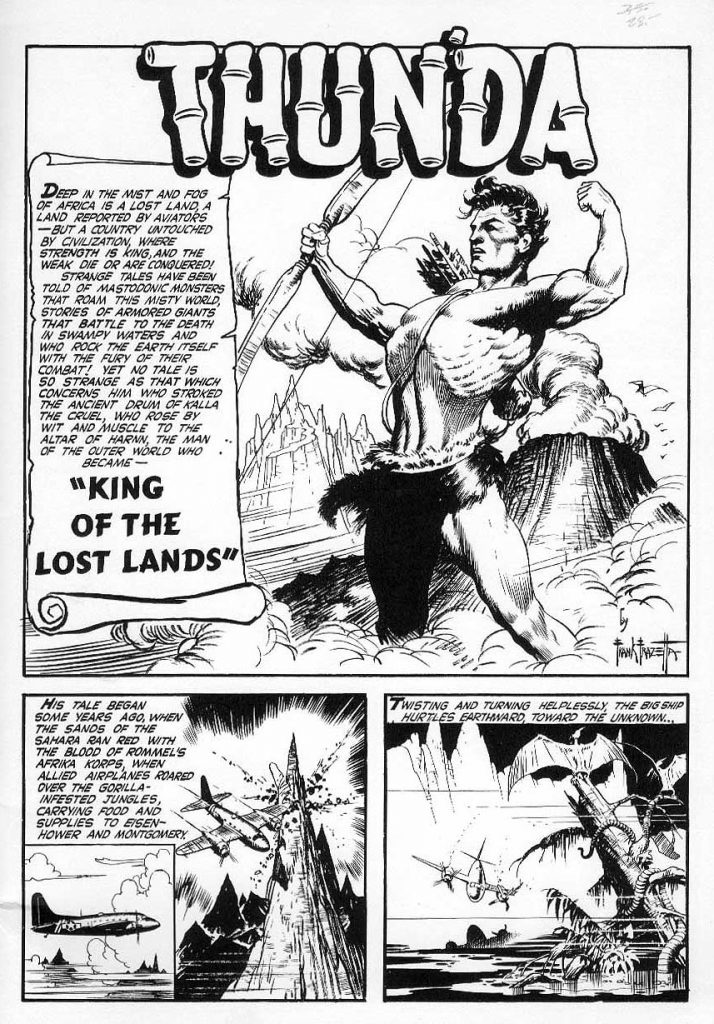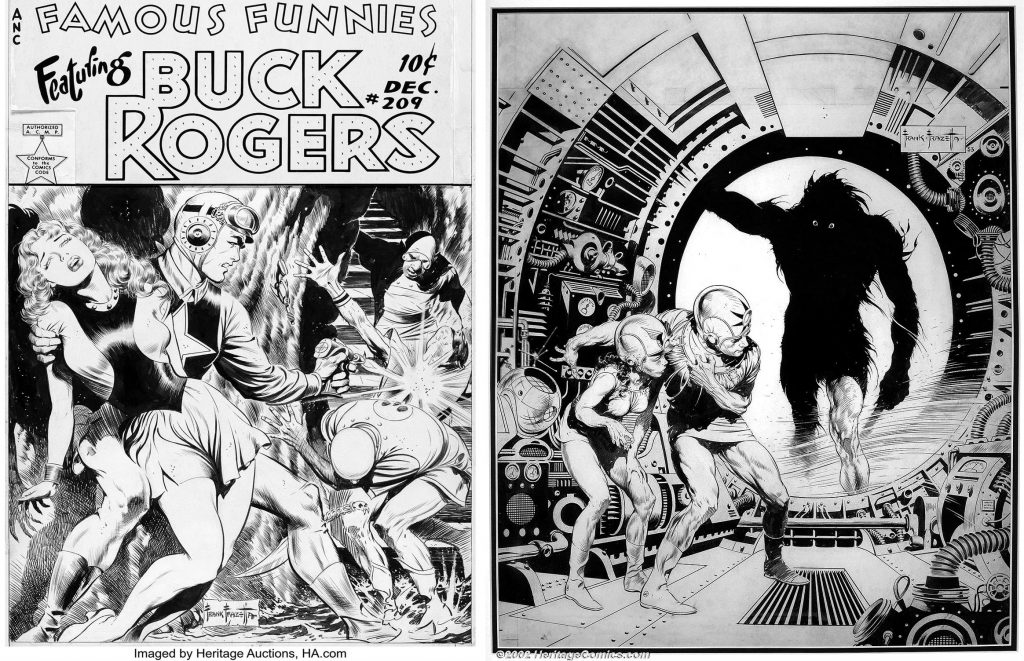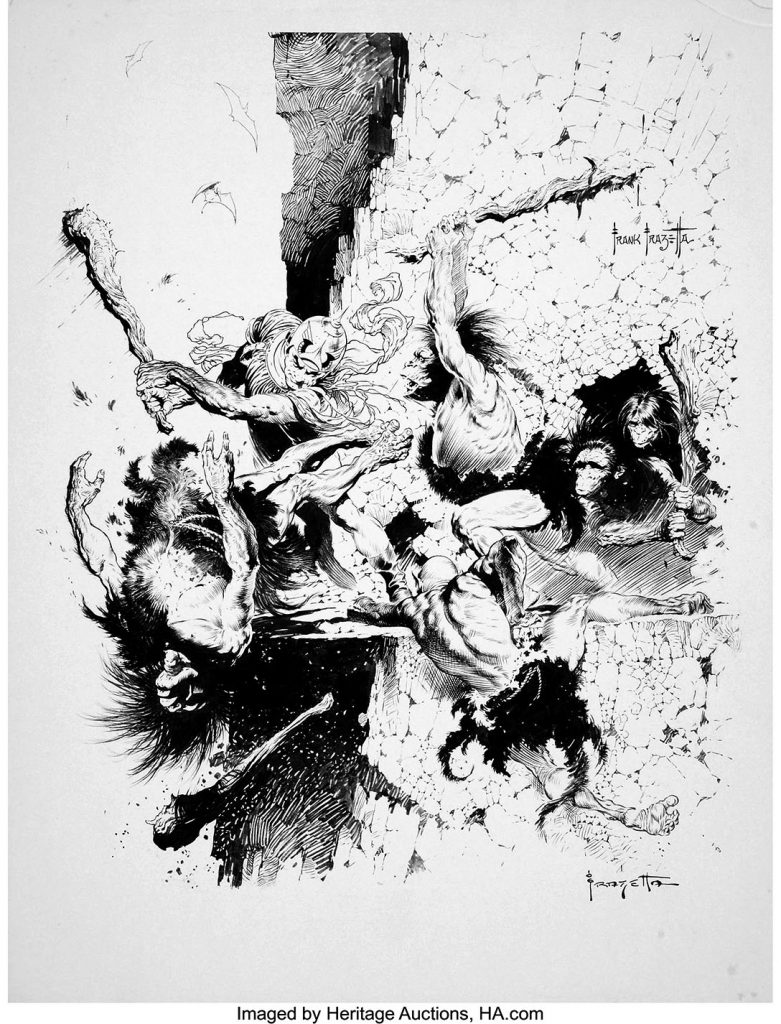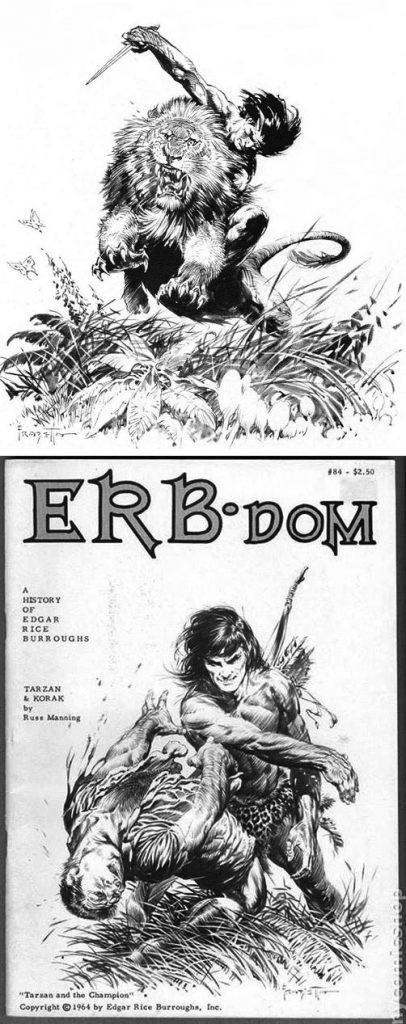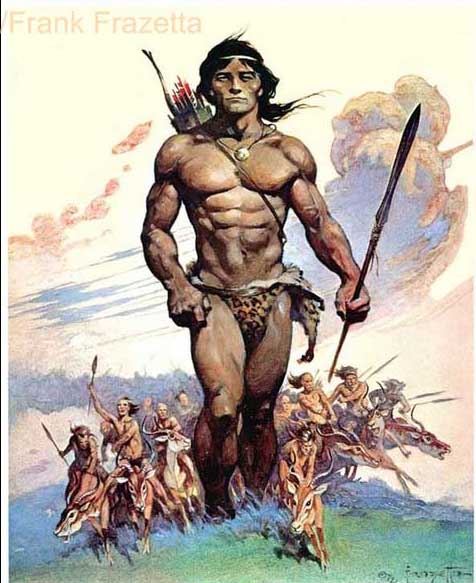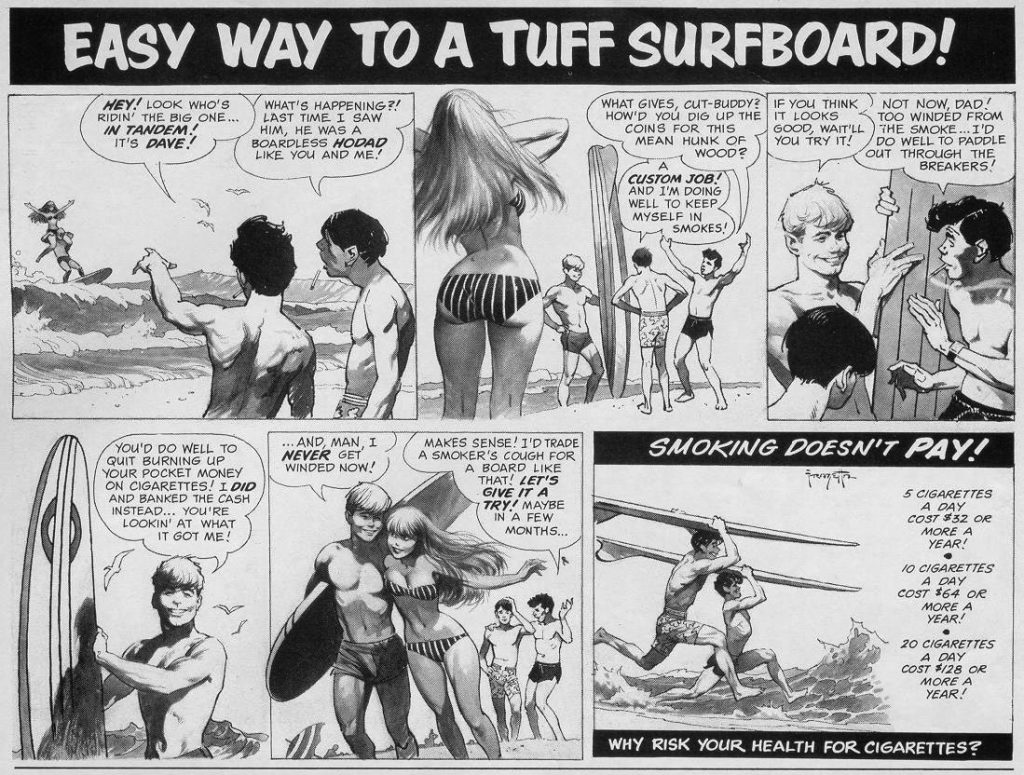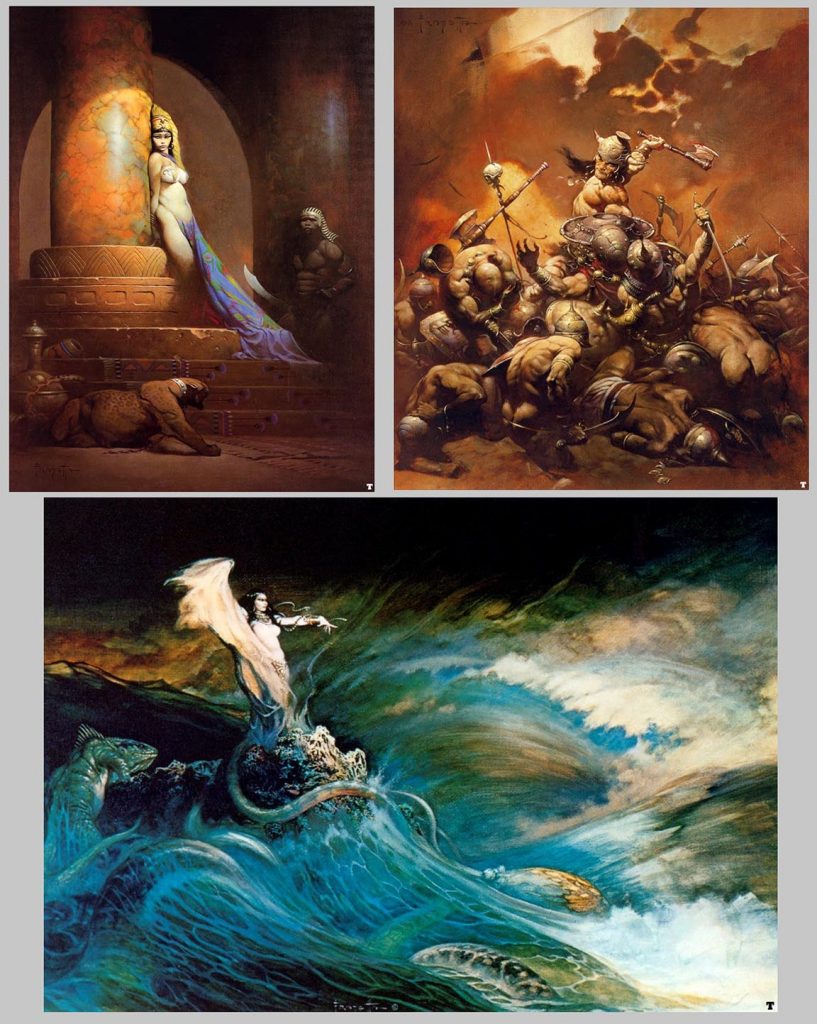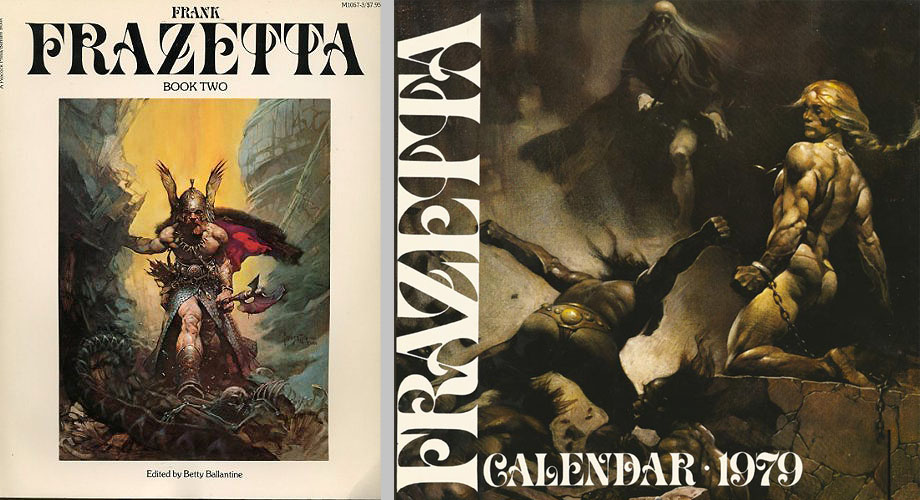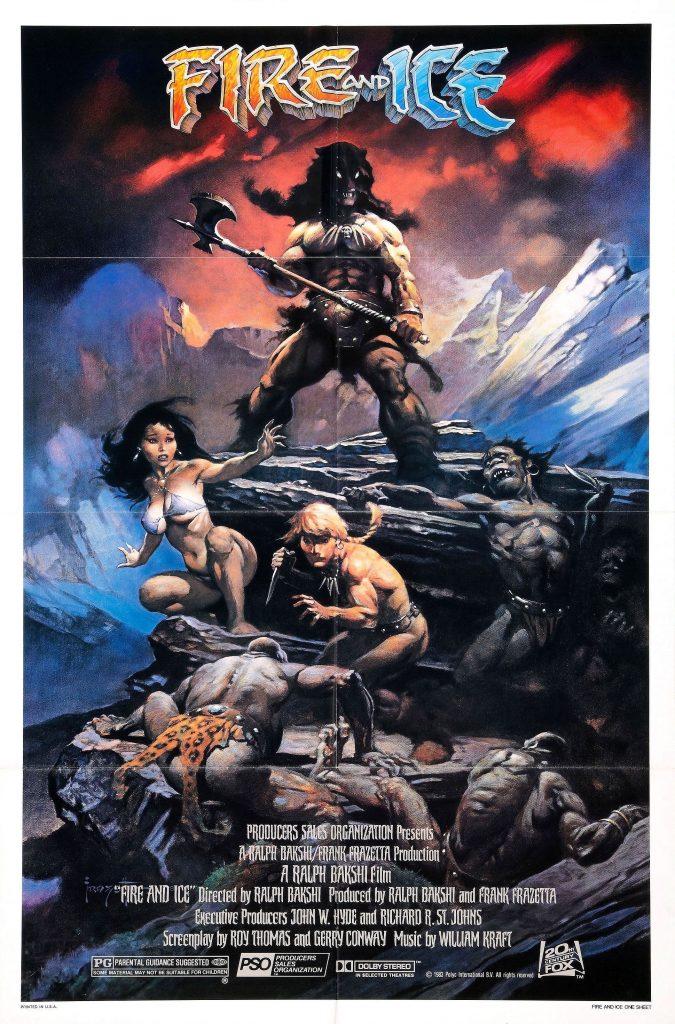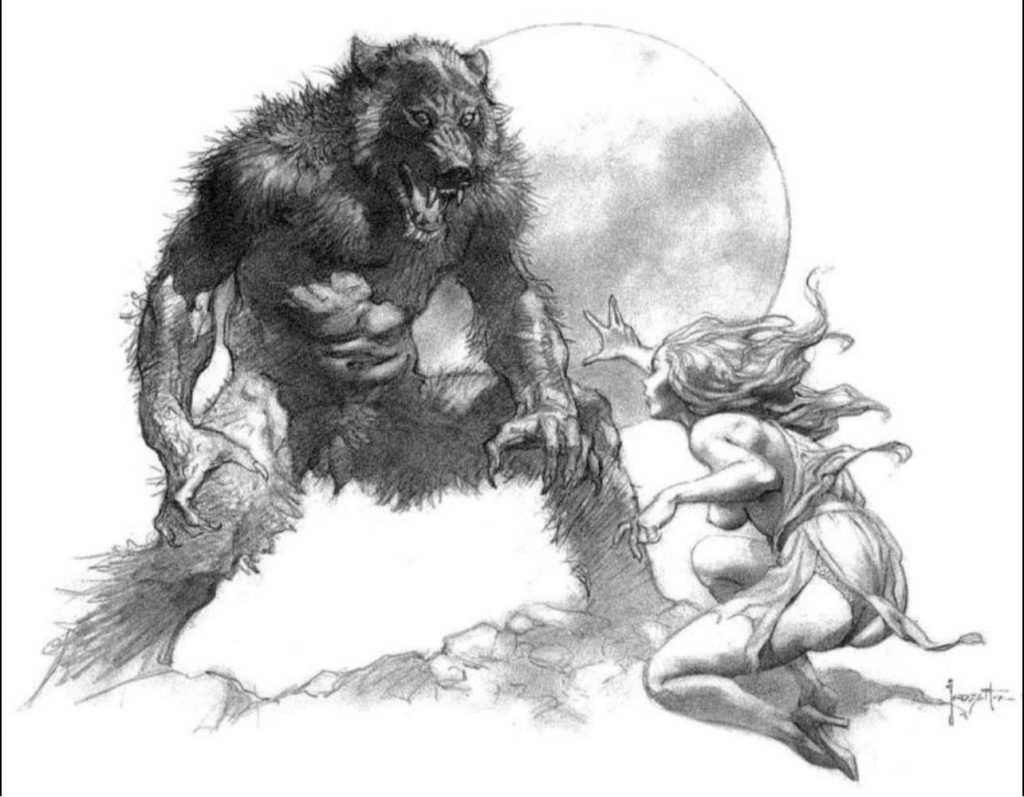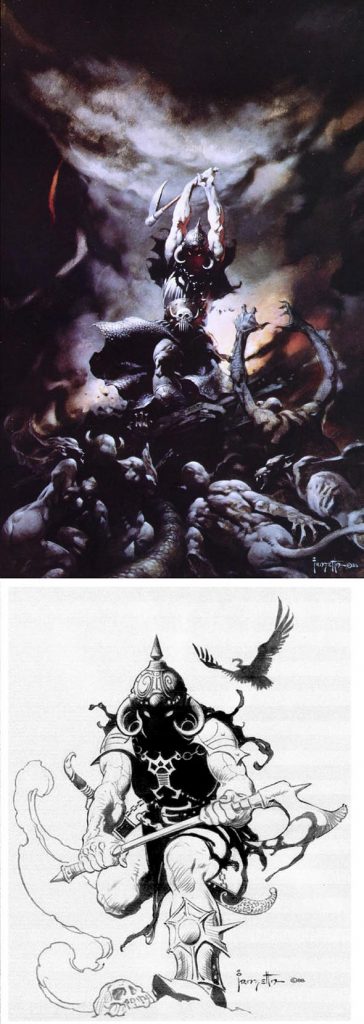Frank Frazetta—Inker With Fire
By Mike Pascale ©2023
Due to the mountain of biographical information written about Frank Frazetta both off and on the Internet, especially regarding his paintings, we at the Inkwell Awards would like to focus more on his incredible black-and-white ink work. But we’ll cover the biographical stuff in context too. So this is longer than our normal Bio articles.
Frazetta (nickname “Fritz”) was born in Brooklyn, NY on February 9, 1928. At eight years old, teachers urged his parents to enroll him at in the Brooklyn Academy of Fine Art, under the tutelage of Italian classicist Michael Falanga. (Not unlike another famous painter of his century, Michelangelo, who had an apprenticeship with Domenico Ghirlandaio as a teen.) The instructor wanted to send Frank to Italy for painting classes. But Falanga’s untimely demise and the school’s closure led to the now 16-year-old Frazetta to assist comic book artist John Giunta. His first published work was his “Snowman” character in TALLY-HO COMICS #1, 1944. Frazetta pencilled and Giunta inked. “[Giunta] had an interesting style, a good sense of spotting and his blacks worked very well,” Frazetta said in the book ICON. “You can see a lot of his influence even today in some of my ink work.”
Frazetta contributed to everything from funny animal comics to western, adventure and romance titles. (Oddly, he avoided the increasingly popular superhero genre.) He was most influenced by Hal Foster’s TARZAN strip, Milton Caniff’s TERRY AND THE PIRATES and E.C. Segar’s famous POPEYE. Frank said, “Foster’s TARZAN was it,—I loved Tarzan, I wanted to be Tarzan, just like all my friends…Foster was a fine artist and that’s what I wanted to do.” He also tried his hand at comic strips, including a year-long stint on JOHNNY COMET (later ACE McCOY) with little success. But the delicate, intricate and textured line work (“about 90% of it was brush…and a little pen here and there,” Frazetta said) that separated Fritz from the rest of the pack was evolving and evident in every one of those endeavors, in increasing quantity.
The late Dave Stevens, a famous ink master himself, wrote, “[JOHNNY COMET] was a tantalizing glimpse at some of Frank’s finest work as a line artist…I would revisit it and learn a great deal that I could apply to my own experience as a struggling brushman.”
Frazetta’s most renowned comic work came in the 1950s with a striking series of Buck Rogers covers for FAMOUS FUNNIES and the even more stunning and iconic work for EC (publisher of the MAD comic and later magazine). His most famous EC cover, WEIRD SCIENCE-FANTASY #29, was a reworked, unused Buck Rogers cover. (Frazetta was the only artist to have that original art returned—in exchange for half the usual fee.) Frank also contributed some interior pencilling and inking with friends Al Williamson, Roy Krenkel and Angelo Torres.
When the comic book industry nearly imploded in the mid 1950s due to the infamous Kefauver senate hearings, most companies folded and EC published only MAD magazine. Frazetta then spent eight long years as a “ghost” (uncredited artist) pencilling the Sunday strip of the über-popular LI’L ABNER for controversial creator Al Capp. Despite the excellent money for the time, demands of family and a desire to break out from under such an unethical and aesthetically stifling assignment took their toll. When Capp had the audacity to cut Frank’s salary in half in 1961, the artist quit, and with his wife Ellie’s encouragement, struck out on his own.
However, aping Capp meant subverting Frazetta. It took nearly two years to get his style back, especially the inking. “Pen and ink is tough, you know?” he said in an interview. “You’ve got to keep doing that. If you stay away from that for years, then you’ve got to re-learn. Painting, no problem. Drawing, no problem. But just the handling of the pen—it’s very difficult…Control. And the dexterity that comes with it. If you do it long enough, it becomes second nature.”
He found most editors and art directors in and out of comics (as now) more obsessed with either “house” or “hot” styles rather than what was “good.” They deemed Frazetta’s style and delicately feathered and crosshatched ink work to be passé. Thanks to former EC co-worker George Evans and others, Frank contributed b&w ink magic to some men’s magazines and painted his first paperback book covers for some obscure romance novels–both perfect for his often erotically-charged art and mastery of the female form. (There’s nothing like a “Frazetta woman.” But sometimes you can recognize one by just the inking of the hair!) The gorgeous Burroughs illustrations for Canaveral Press also helped pay the bills.
Opportunity finally presented itself in the form of former EC cohort Roy Krenkel. Frazetta’s friend and sometimes mentor had been illustrating paperback book covers of Edgar Rice Burroughs novels for Ace publications. Krenkel sought Frazetta’s help with the growing workload. Krenkel had to convince editor Donald Wollheim, who had earlier summarily dismissed Frank’s work. Soon, the future master was painting his own covers for many ERB characters. But he extended less effort due to Ace’s refusal to return the originals.
Frazetta also worked with publisher Jim Warren on a new line of magazine-sized, EC-inspired comics with B&W interiors. Frazetta was asked to paint “anything he wanted” for the covers, and given back the art and reproduction rights. In addition to his last published interior comics work, Frank produced some of his most memorable images for titles CREEPY, EERIE, VAMPIRELLA and BLAZING COMBAT.
The year 1965 saw his career-defining project of painting the now-iconic covers of Robert E. Howard’s Conan paperbacks for Lancer books (the paid more than Ace and returned the originals). The artist also entered the more lucrative entertainment industry, illustrating many movie posters and album covers, thanks to the attention from a back page parody painting of Ringo Starr for MAD magazine.
By the mid-1970s, Frazetta became a nationally recognized name in the burgeoning fantasy art field due in large part to Ellie’s business sense. She reclaimed as many of his original paintings as possible and began selling poster prints of Frank’s paintings. Several limited edition portfolios of her husband’s b/w ink work followed, as well as the first “Art Of Frazetta” trade paperbacks. The couple opened The Frazetta Museum in eastern Pennsylvania.
The ’80s saw continued success, with more books on the artist’s work as well as advertising and album covers. One of Frazetta’s most iconic images from the ’70s, “The Death Dealer”, became the subject of a series of novels written by noted illustrator and pinup artist Jim Silke.
In 1983 the artist entered film with FIRE AND ICE, an animated version of his characters. Helmed by the innovative Ralph Bakshi (the animated FRITZ THE CAT, LORD OF THE RINGS and COOL WORLD with a young Brad Pitt), the movie set out to create a “Frazetta painting come to life.”
Unfortunately, the mid-’80s saw health problems creep into the artist’s life, as Frazetta developed thyroid problems which took a long time to diagnose. He suffered wild changes in weight and other issues but eventually brought them under control years later. He never stopped working.
In the1990s Frank partnered with heavy-metal crooner (and longtime Frazetta fan) Glenn Danzig to produce a series of comic books by other artists based on the Death Dealer and other Frazetta creations. Also published by Danzig’s Verotik was ILLUSTRATIONS ARCANUM, the first tome to concentrate solely on the artist’s subtle but powerful pencil art.
Frazetta also tried his hand at sculpting, though unlike Michelangelo, he stuck to modelling rather than chiseling away at stone. Statues and action figures of his figures by other artists were released. He even had his own magazine, FRANK FRAZETTA FANTASY ILLUSTRATED, featuring full-color comics by other artists under Frank’s covers.
Entering his 70s, a series of minor strokes hit the athletic artist and he moved between Pennsylvania and Florida for health reasons. The Frazetta Museum changed locations to Boca Grande, FL and back to PA. A fitting way to close out the century that brought Frazetta to the world.
Eventually Frank lost most of the use of his right hand, but refused to let that impede his artistic passion. The master simply retrained himself to draw and paint with his left hand–it took a bit longer but the results were nearly indistinguishable. The new century and millennium saw the release of the 2003 DVD documentary, PAINTING WITH FIRE. The two-disc version contains many tributes from Frank’s contemporaries and those he influenced, as well as a segment showing his new left-handed technique. The film remains the best and most comprehensive visual overview of an amazing artist and his equally amazing career. A trilogy of definitive monographs emerged: Underwood Books’ LEGACY, ICON and TESTAMENT, published from 1999 to 2001.
The end of the decade proved unkind as Ellie succumbed to cancer in 2009. The matriarch of the family was her husband’s greatest inspiration (“She’s my right arm,” he told me in the ‘80s). Frank soldiered on as best he could, still creating art until additional strokes took their toll and he joined his wife on May 10, 2010—502 years to the day when Michelangelo joined the “studio invisible.”
Frazetta’s influences ironically never included the Great Masters, but rather classic illustrators like Howard Pyle, N.C. Wyeth and Heinrich Kley, along with the aforementioned comic strip giants. Yet like all greats of their fields, he synthesized those myriad influences into a unique vision and voice. Also akin to Michelangelo, Frazetta has inspired others who became all-time greats themselves, like Bernie Wrightson, Mike Kaluta and Mark Schultz.
Fritz’s popularity also spawned imitators and swipers, a sad few building their entire careers by being little more than cheaper versions of the master. But these impersonators’ original works haven’t sold into the seven figure range; nor have they won Frazetta’s numerous awards and honors, including induction into the Society of Illustrators Hall of Fame and the first Spectrum Grand Master Of Fantastic Art.
And now, The Inkwell Awards’ Joe Sinnott Hall Of Fame (after winning 2021’s Stacey Aragon Special Recognition Award, the SASRA).
It’s about time!
Due to this association with illustration, most museums and art historians have neglected or refused Frazetta’s rightful placement alongside that of his so-called “fine art” brethren. By derisively classifying him “merely” as a commercial illustrator, they only reveal their hypocrisy, as Michelangelo, Leonardo and nearly every European painter through the 17th century served basically the same function. All the titans of “fine art” accepted paid commissions to illustrate tales of mythology and/or The Bible (to promote/advertise the Church), or for portraiture. To the cognoscenti, muscular saints battling evil dragons are Art with a capital “A”, but muscular barbarians battling same are “mere” illustration with a lower case “i”.
One guesses even Michelangelo would have a problem with that. In fact, were he alive today, he’d most certainly be a Frazetta fan.
Just like the rest of us.
——————————
All images are copyright their respective owners.
Inkwell Awards assistant director Mike Pascale is a freelance storyboardist, writer, artist and comic-book & strip creator based in CA. Material for this article was culled from the writer’s experience, Fantagraphics’ interview in The Comics Journal #174, and the books and DVD cited. No Wikipedia this time.


